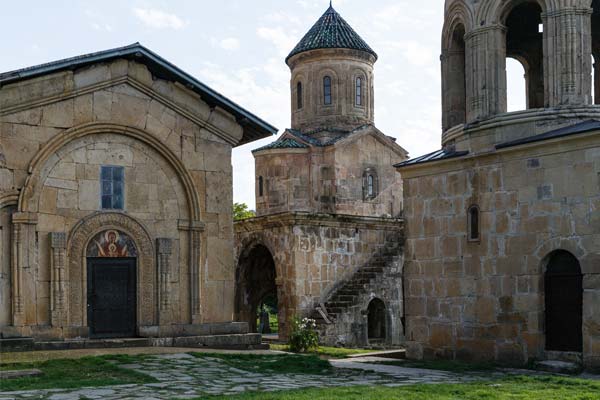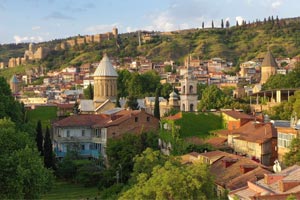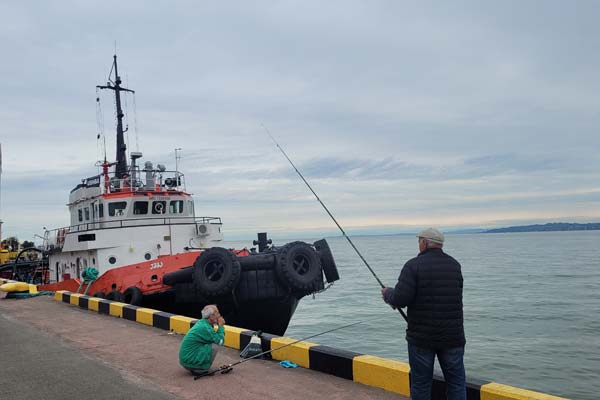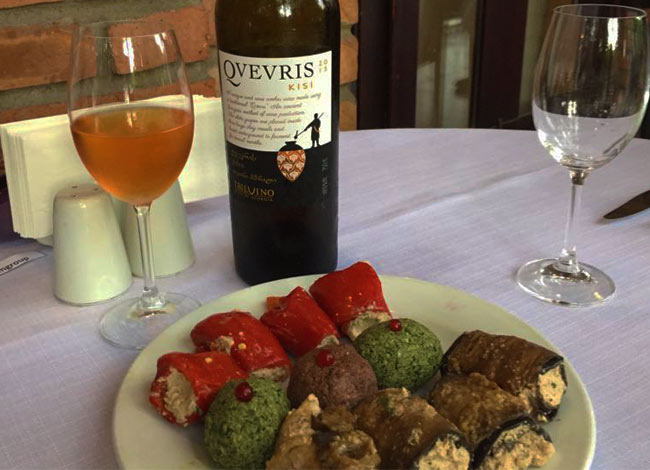|
Gelati Monastery and Cathedral The Gelati Monastery, a UNESCO World Heritage Site, is the number one attraction in Georgia. The entire monastery complex consists of architectural masterpieces, but the crowning glory is the main church with its colourful frescoes and precious mosaics. However, it is not only the architectural and artistic aspects of the monastery that are important, but also its historical, spiritual and intellectual significance. Monastery complex Main church dedicated to the Assumption of the Blessed Virgin Mary - 12th c. The name The name "Gelati" is derived from the Greek word "Genesis", which means creation, origin, birth or beginning. Main church dedicated to the Assumption of Virgin Mary - 12th century. It is 35 metres wide, 36 metres long and 34 metres high. The main church, architecturally a cross-domed church, stands in the central part of the monastery. Construction of the church began in 1106 under King David the Builder and was completed twenty years later, in 1126, one year after his death, by his son Demetre I. Yellow sandstone slabs of various sizes were used to build the main church. The stones are well cut, but little decorated. However, the facades are finely carved. On each side of the church, under the dome, there is a triumphal arch scheme (a division of the façade into three arches) in which narrow windows are inserted. The dome also has rounded arches with 16 narrow windows. The cathedral has entrances on three sides, from the north, south and west. The cathedral has a total of 36 windows. Annexes to the main church The main church has three large annexes, on the north, south and west sides, which give the cathedral its massive appearance. These additions date from the second half of the 12th century. Northern extension The northern extension runs along the entire northern wall, with a large entrance portal in the centre. It is made up of four sections and houses several oratories, one of which is dedicated to Jesus. In the central section is the tomb of the Georgian Patriarch Zaqaria Qwaliani, whose fresco can also be seen in the central part of the cathedral. The inscription above the entrance portal tells us that the fresco was painted between 1565 and 1584 and was donated by the archbishop of the cathedral, Anton. Various kings of West Georgia are buried in the first section: King Giorgi, son of Constantine, 1604-1639. Southern extension The southern extension runs along the whole of the southern wall, also with a large entrance portal in the centre. In the annex is a prayer room dedicated to St Andrew the First-Called. The entrance portal preserves 16th century frescoes painted during the reign of the West Georgian King Bagrat III. The West Georgian King Alexander, son of Giorgi (1720-1751) is buried in this part of the cathedral. The historians of Queen Tamar noted in their records that the queen was buried in the Gelati Cathedral, without mentioning the exact location of the tomb. According to oral tradition, her tomb is located in this southern annex of the cathedral. Officially, it is still uncertain where Queen Tamar is actually buried. Western Annex (Narthex) The western annex runs along the western wall and is mainly a narthex. It has three entrances from the south, north and west. The main entrance to the narthex and the church in general is from the west side. Part of the original 12th century fresco has been preserved in this part of the cathedral. This fresco depicts the Council of Chalcedon. The rest of the frescoes in the western extension date from the 16th and 17th centuries. Central part of the church In the eastern part of the interior is the altar, with the sacristy and the proskomidie room to the left and right. Above the altar is another level with two secret rooms. The west side of the central interior is very elaborate. In the side corners there are stairs leading to the second floor, where the gallery is located. The gallery was once lit by daylight through two small windows, but these are now blocked up. A connection to the narthex is also blocked. Frescoes in the main church of Gelati, 12th to 17th century The Cathedral of Gelati is like a museum of medieval fresco painting. The abundance of daylight from the 16 windows of the dome, as well as from the side openings, brings out the variety of colours in the interior. A special part of the frescoes in Gelati, and also unique in Georgia, is the mosaic fresco in the eastern apse, above the altar. The mosaic dates from the 12th century and depicts the Virgin Mary with Jesus and two archangels at her side. The Byzantine influence is clear in the mosaic, but it also differs from classical Byzantine frescoes: round faces, significant eyes, dynamism and no Byzantine frontality with the often fixed eyes. There is also a difference in technique, because in Gelati the mosaic stones are set very close together. The stones themselves are of different sizes and shapes. The material used for the mosaic is gagat, a vitrified sandstone, and other glass mosaics in different colours. The lower part of the mosaic fresco was completed with a classical painting from the 16th century depicting the Last Supper with bread and wine. This combination of mosaic and classical mural painting makes Gelati's fresco unique. The dome depicts Jesus Pantocrator seated on a throne with the sign of the blessing. In the lower corners of the dome are the four Evangelists: Matthew, Mark, Luke and John (16th century). On the north side, the upper register depicts Pentecost, and further down the altar side, the Resurrection of Lazarus. The middle register shows Jesus' entry into Jerusalem, and the windows depict St Theodore Stratelates and St Theodore Tiro. In the lower register there is a portrait of King David the Builder with the church and a scroll in his hand. Next to David are the West Georgian Patriarch Evdemon (1557-1578), the West Georgian King Bagrat III (1510-1565) and his wife Helena, followed by the West Georgian King Giorgi II (1565-1583) and his wife Rusudan and their son Leon. On the eastern side of the northern wall is Christ's Descent into Hell, with Emperor Constantine and Helen with the Cross below. These frescoes date from the 16th century. However, it is believed that the fresco by David is a reconstruction of the 12th century image. On the southern side, in the upper register are: the Annunciation of the Lord, the Birth of Jesus, followed in the middle register by the Crucifixion of Jesus, St Giorgi and St Demetrios can be seen on the windows, in the third register are the Removal of the Body of Jesus from the Cross and the Dormition of the Virgin (Assumption). The lowest register depicts the Eucharist and the veneration of the Mother of God. The west side is also very interesting. Here you can see the following interesting frescoes, among others The Crowning of Christ with Thorns, The Last Supper, The Washing of the Feet, The Denial of Peter, Jesus and Pontius Pilate, The Flogging of Jesus and The Death of Judas Iscariot. The frescoes listed here are only a small part of the frescoes in Gelati Cathedral. St George's Church of Gelati 13th century The second church of the Gelati monastery complex, dedicated to St George, stands about 10 metres east of the main church. The building is a smaller model of the Gelati Cathedral with very similar architecture and dates from the 13th century. Inside the church there are frescoes depicting scenes from the New Testament and historical figures. The frescoes date from the 16th century and were donated by the West Georgian Patriarch Evdemon and the West Georgian King Bagrat III and his wife. The frescoes of the three donors can be seen in the Church of St George. The church was thoroughly restored and frescoed by Bagrat III after the Ottomans set fire to the monastery in 1510. St George's later became the burial place of King Bagrat III and his family. Church of St. Nicholas of Gelati 13th century. The third church in the Gelati monastery complex, dedicated to St Nicholas, stands between the main church and the Gelati Academy. The church of St Nicholas is a two-storey building dating from the 13th-14th centuries. The first floor has vaulted openings and the second floor can be reached from the central room of the church via a stone staircase attached to the side. The 13th century bell tower The bell tower of Gelati has three floors. The first two floors date from the 12th century, while the third floor, with its vaulted openings, dates from the 14th century. On the first floor there is a spring of water that is brought to the monastery through ceramic pipes. The flow of water in 24 hours is 57,000 litres and originally every building in the monastery was supplied with water. The water supply system dates back to the 12th century, but has been renovated several times over the years. Academy of Gelati 12th century The Academy of Gelati was founded in 1106 by King David on the model of the Academy of Mangana in Constantinople. The academy had a large library where many books were translated and written. The Code of the Royal Court (გარიგება ხელმწიფის კარისა) was written here. Georgian scientists, theologians, philosophers and jurists who had worked at the Mangana Academy were recruited for the Academy. The most famous were Ioane Petrizi and Anton Ikaltoeli. The Gelati Academy taught seven liberal arts, according to the trivium (grammar, rhetoric, dialectic) and the quadrivium (arithmetic, geometry, music, astronomy). Gelati also had a medical school and an observatory. For centuries, the Gelati Academy trained many scientists and professionals for leading positions in the country, until teaching ceased after the Ottoman invasion in 1668, some 200 years after the Ottomans also destroyed the Mangana Academy in Constantinople. In the following decades, the academy building was rebuilt, but no longer as an academy, but as the refectory of the Gelati Monastery. The Gelati Academy, along with other monuments in the monastery complex, is a UNESCO World Heritage Site. The Tomb of David IV the Builder The tomb of the greatest Georgian king, who was later canonised, is located at the southern entrance gate of the monastery. The tombstone is about 2 metres high and lies horizontally, so you have to step over it to enter the monastery from the south. It is thought that the king wanted to be buried in this place so that everyone who came to the monastery would step on his grave and so that the king would have a spiritual link with future generations. The tombstone reads: "Jesus, this is my resting place now and forever, this is how I wish to be buried". (ქრისტე! ესე არს განსასოჳენებელი ჩემი ოჳკოჳნითი ოჳკოჳნისამდე. ესე მთნავს, აქა დავემკჳდრო მე). King David was born in 1073, crowned king in 1089 at the age of 16, and died in 1125. A metal door with Arabic inscriptions hangs from the entrance portal where David's tomb is located. This is the gate of the city of Ganja (Azerbaijan). The gates were taken from Ganja by David's son, Demetre I, in the 12th century, after he had conquered the city. On the gate is the following text: "In the name of Allah, this gate is made for our Lord, His Highness Shavur-Bin-Al-Fadli, May Allah grant him a long life. Made by the blacksmith Ibrahim-Bin-Utman-Mallaqun in the year 455" (1063). History of Gelati King David the Builder began the construction of Gelati Cathedral in 1106, at a time when he was leading the entire country into a period of economic, political, military and spiritual prosperity, and when he also succeeded in uniting Georgia, including Tbilisi. It is not known exactly which parts of the monastery were completed during David's lifetime. However, it is known that the construction of the cathedral was completed by his son Demetre in 1126, a year after David's death. Demetre also had the interior of the cathedral painted (1126-1130). After the cathedral was built, the monastery was founded here, which had a special status until the 15th century. Gelati was directly subordinate to the king and the patriarch could only ordain priests, otherwise the monastery was beyond the reach of all religious hierarchies. The high priests and monks of Gelati were also members of the royal court. The monastery owned several estates where extensive agriculture was practised, with a focus on viticulture, animal husbandry and bee-keeping. In addition to its special status and wealth, Gelati underlined its claim to spiritual leadership in the region with its famous academy. The monastery had an important collection of manuscripts from the 12th to the 17th centuries and housed the most famous Georgian gold and silversmith's workshop. Georgia was weakened by Mongol raids from the second half of the 13th century, and Gelati was badly affected. The monastery was partially abandoned and the academy closed, but King Giorgi V managed to restore the country and Gelati and its academy in the 14th century. After the fall of Constantinople and the destruction of the Mangana Academy, it was only a matter of time before the Ottomans arrived in western Georgia. In 1510 they entered Western Georgia (Imereti) through the Zekari Pass and set fire to the whole region, especially Kutaisi and Gelati, as well as other monasteries and churches. In the same year, 1510, Bagrat III was crowned King of West Georgia. During his reign, the cathedral and other monuments in the monastery complex were restored and the damaged frescoes in the churches were repainted. Gelati became the seat of the bishop and the residence of the West Georgian Patriarch was moved from Pizunda to Gelati. King Bagrat III was nicknamed the "New Builder of Gelati". Bagrat's son, Giorgi II, continued his father's work of rebuilding West Georgia and Gelati, and earned a place on the cathedral mural next to King David. At the side of the kings was the Patriarch of West Georgia, Evdemon. He is also depicted on the fresco next to King David. Gelati suffered a second Ottoman raid in 1668, during which the monastery was looted and the buildings damaged. During this period, the Gelati Academy ceased to exist. The third and last raid on Gelati took place in 1759. This time, Muslim irregulars from Dagestan in the North Caucasus invaded Gelati and severely damaged the monastery. They looted what they could carry away and destroyed the rest on the spot. The background to this destruction was that at the time almost all the major fortresses in West Georgia were in Ottoman hands and the region was officially ruled by the Ottomans. The West Georgian kings had only formal power and therefore very little room for manoeuvre. The so-called irregulars were a punitive expedition organised by the Ottomans. The punitive expedition followed an attempt by the West Georgian king Solomon I to free his territory from the Ottomans. (See also: Battle of Khresili). King Solomon I eventually managed to free the region, at least partially, from Ottoman rule and rebuilt the Gelati monastery. Gelati under the Russian Empire In 1810, the Kingdom of Western Georgia was also dissolved and incorporated into the Russian Empire. Between 1811 and 1814, the Empire abolished the autocephaly of the Georgian Church. At the top of the church hierarchy were no longer Georgian patriarchs, but Russian exarchs. This and many other things led to several uprisings in Georgia. During an uprising against the Russian tsarist empire, the chief bishop of Western Georgia, who had his seat in Gelati, and the bishop of Gelati were also arrested and deported to Russia. The Bishop of Gelati (Dositeos Qutateli) died on the way to Russia and was buried in Georgia in the fortified church of Ananuri. The Bishop of Western Georgia (Eqvtime Gaenateli) was exiled to a Russian monastery where he died in 1822. More than 100 years later, in 1917, the Georgian Church regained its autocephaly and a new bishop was consecrated in Gelati according to Georgian Orthodox rites. Gelati during the Soviet period In 1923 it was forbidden to hold liturgies in the monastery, and soon the monks were not allowed to stay there either. The almost thousand-year-old monastery was closed. Some of the precious treasures were lost during the Soviet period, and some went to various museums in the country. Soon the monastery itself became part of the Kutaisi State Museum. Gelati in the present The monastery was re-consecrated by the Georgian Patriarch in 1988, shortly before the collapse of the Soviet Union, and has since served as a monastery for men. Gelati Monastery has been a UNESCO World Heritage Site since 1994. Religious festival of Gelatoba Every year on the 28th of August, the day of the birth of the Virgin Mary, the foundation of the Gelati Monastery is celebrated. The festival is called "Gelatoba" and on this day a special service is held by the Archbishop of Western Georgia or the Georgian Patriarch. Many people from the city of Kutaisi are usually present. On following trip, you will visit Gelati Cathedral from 1,690 EUR |






